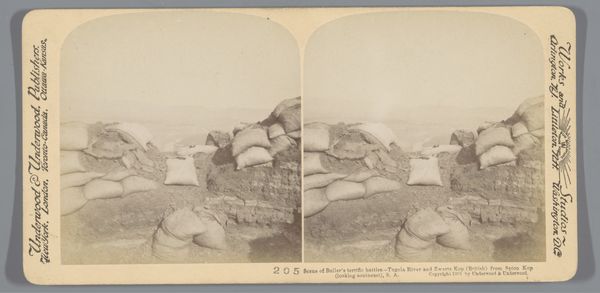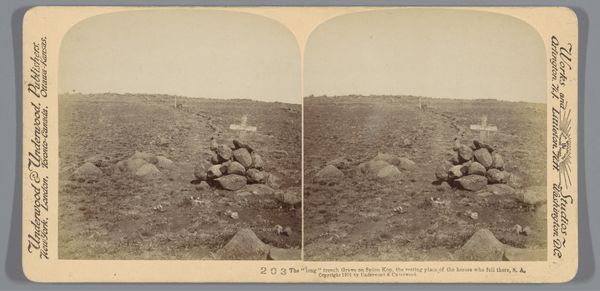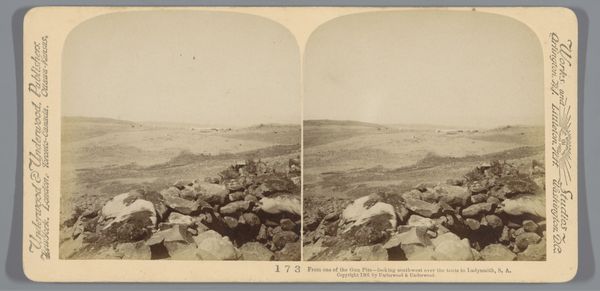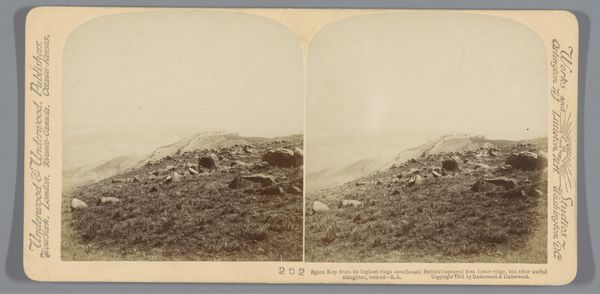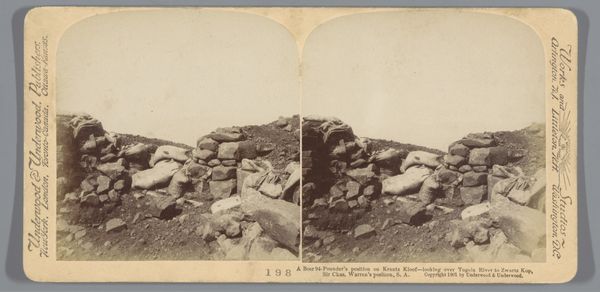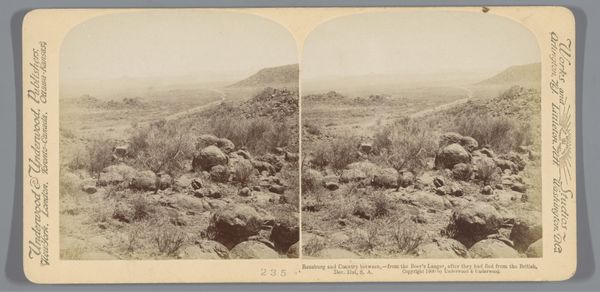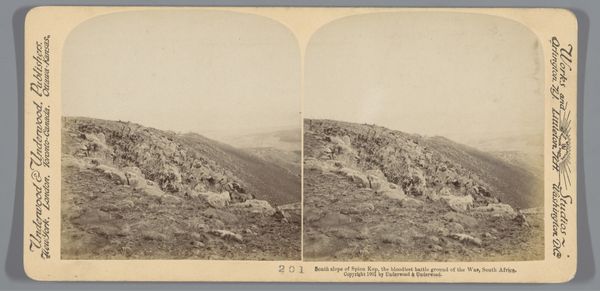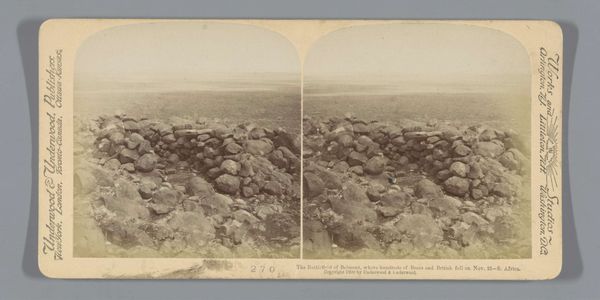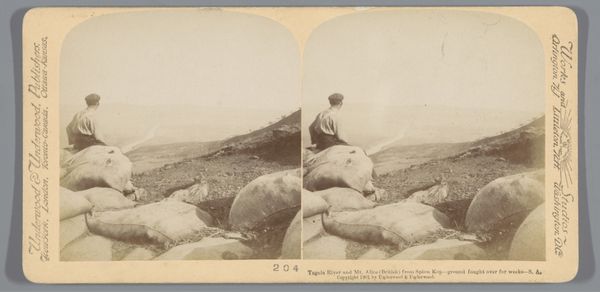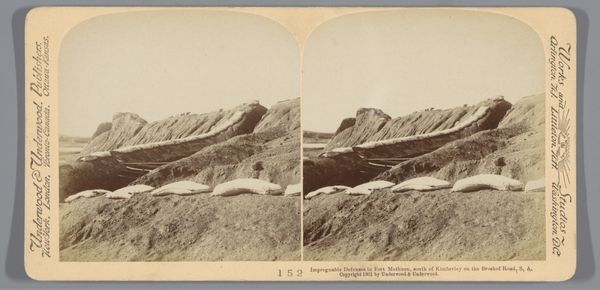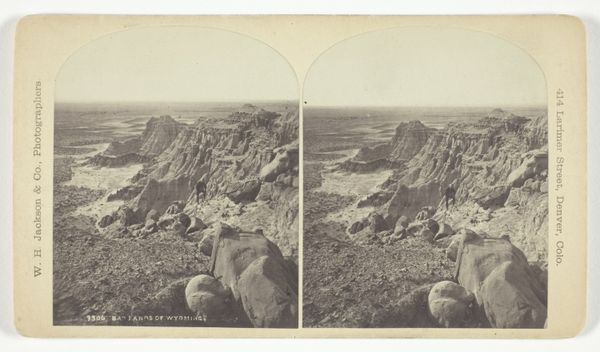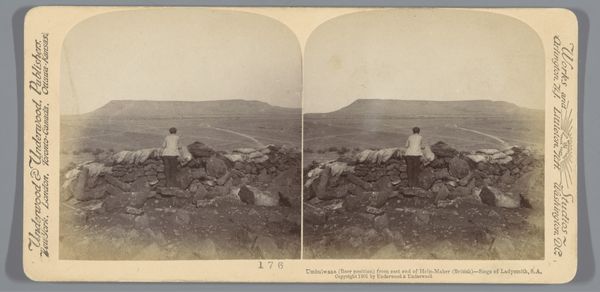
Voorstelling van Britse scouts die een Boerenpatrouille onder vuur nemen in Colesberg, 10 januari 1900 Possibly 1900 - 1910
0:00
0:00
print, photography, gelatin-silver-print
#
narrative-art
# print
#
landscape
#
street-photography
#
photography
#
gelatin-silver-print
#
history-painting
#
realism
Dimensions: height 88 mm, width 178 mm
Copyright: Rijks Museum: Open Domain
Editor: This gelatin silver print, possibly from the early 1900s, is titled "Voorstelling van Britse scouts die een Boerenpatrouille onder vuur nemen in Colesberg, 10 januari 1900" or, "Depiction of British scouts firing on a Boer patrol in Colesberg, January 10, 1900." It shows soldiers in a landscape. It’s fascinating how immediate and documentary it feels, like a raw slice of history. What do you see when you look at this print? Curator: I see a fascinating negotiation between technological advancement, labor, and imperial spectacle. The very process of creating this gelatin silver print is embedded in a network of material extraction and industrial production. Think about the mining of silver for the photographic emulsion, the factories churning out cameras and printing paper, and the logistical chains required to transport these materials and the final product across continents. Editor: So you are focusing on the creation process rather than the image. Curator: Exactly! Consider, too, the labor involved – the photographer’s work in the field, the darkroom technicians, the distribution networks – all contributing to a system that packages and sells war as a consumable product. Furthermore, the image reinforces colonial power through its very act of representation, turning real human conflict into a spectacle for viewers far removed from the actual violence. It turns the experience into something bought and sold. Editor: That’s a perspective I hadn’t considered, this consumption of war. Does the “Realism” style serve to normalize this? Curator: Precisely. Its supposed objectivity masks the complex web of material and economic relations that produce both the image and the event it depicts. Editor: This makes me think about the role of photography in shaping public opinion and even justifying imperial actions at the time. I had seen it as a simple depiction of a battle. Now I see the levels of commercialism! Thanks. Curator: And hopefully you consider also the hidden infrastructures required for art's creation and dissemination, helping to expand our understanding beyond traditional art historical narratives.
Comments
No comments
Be the first to comment and join the conversation on the ultimate creative platform.
